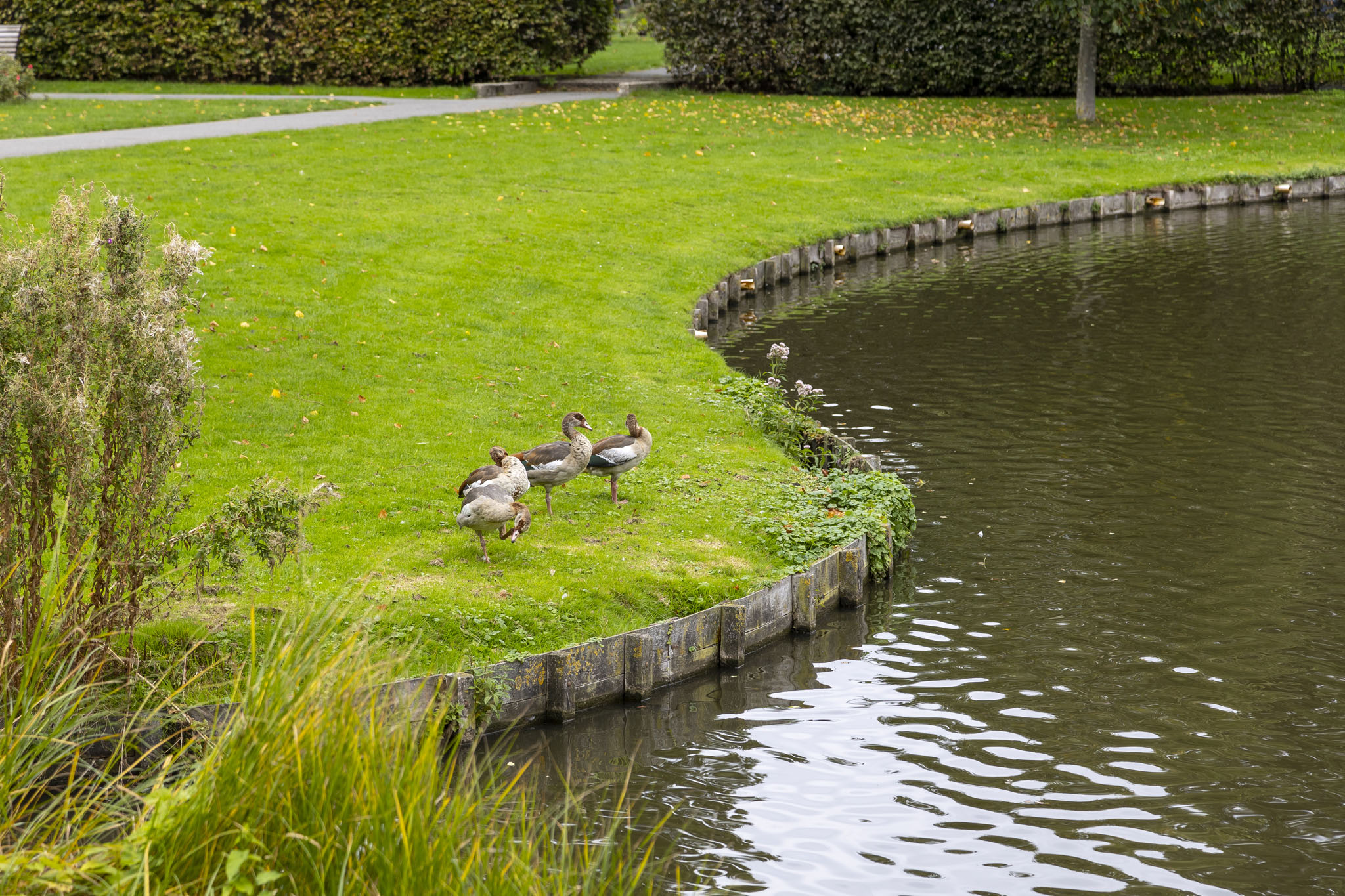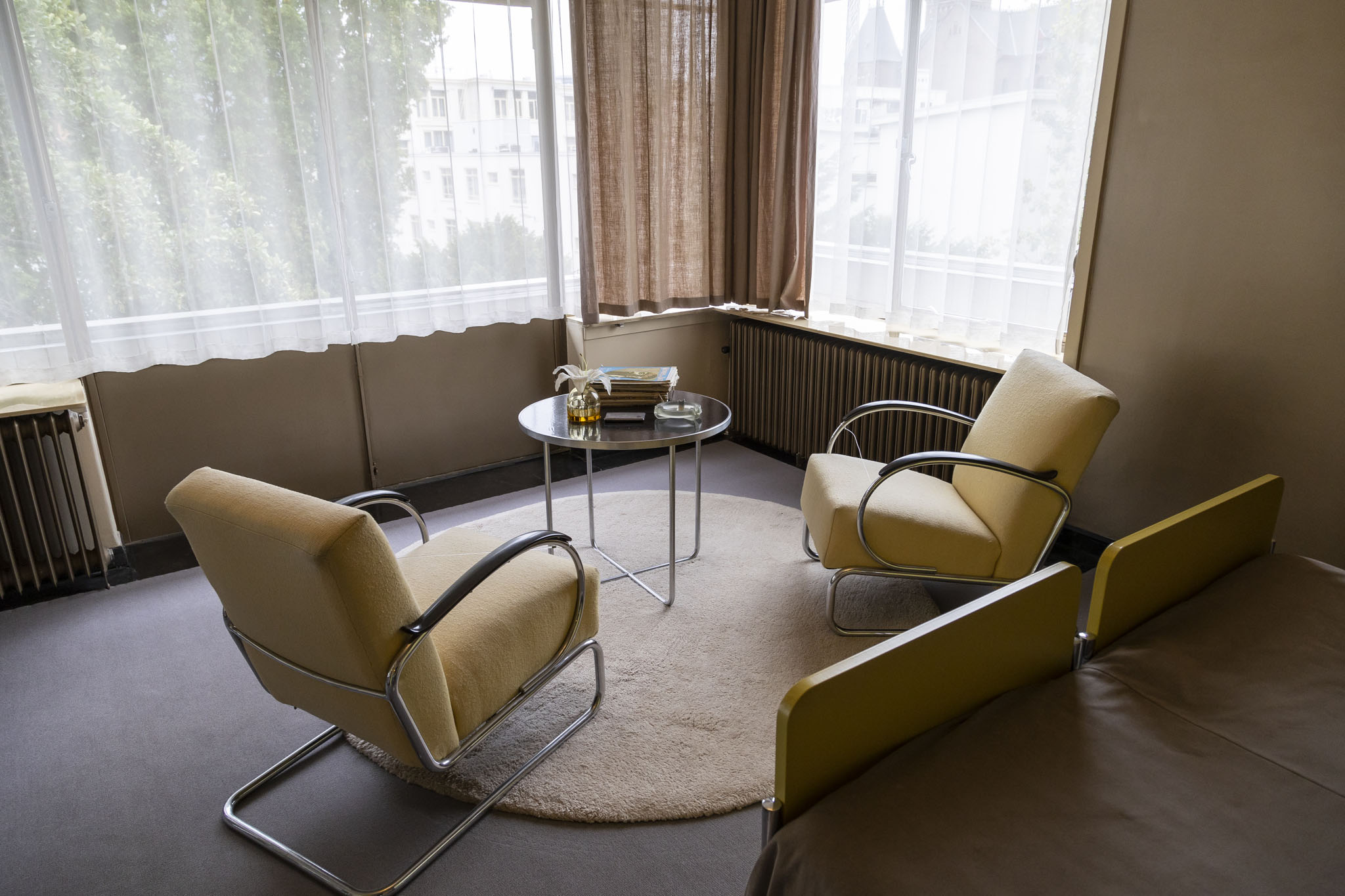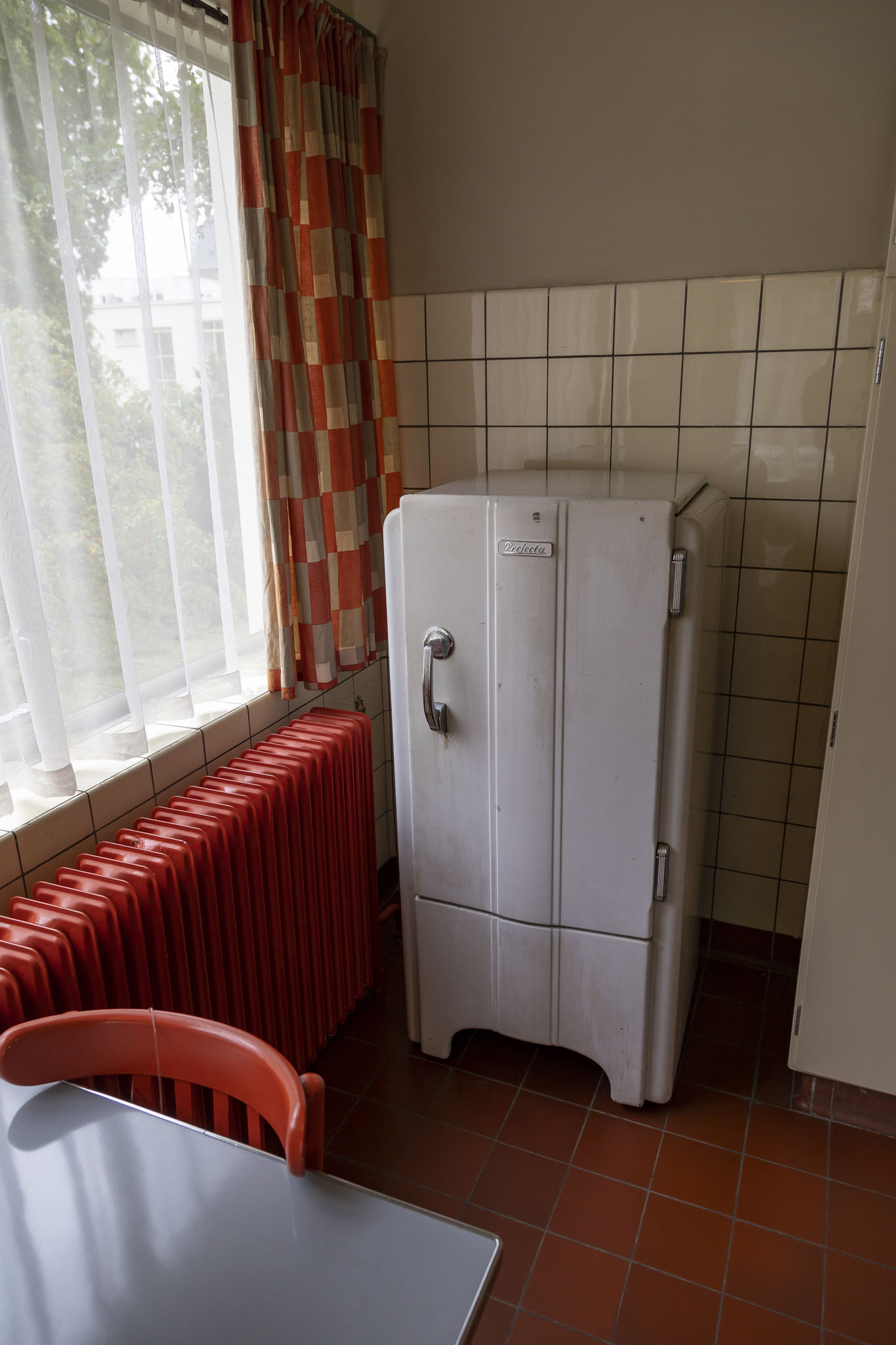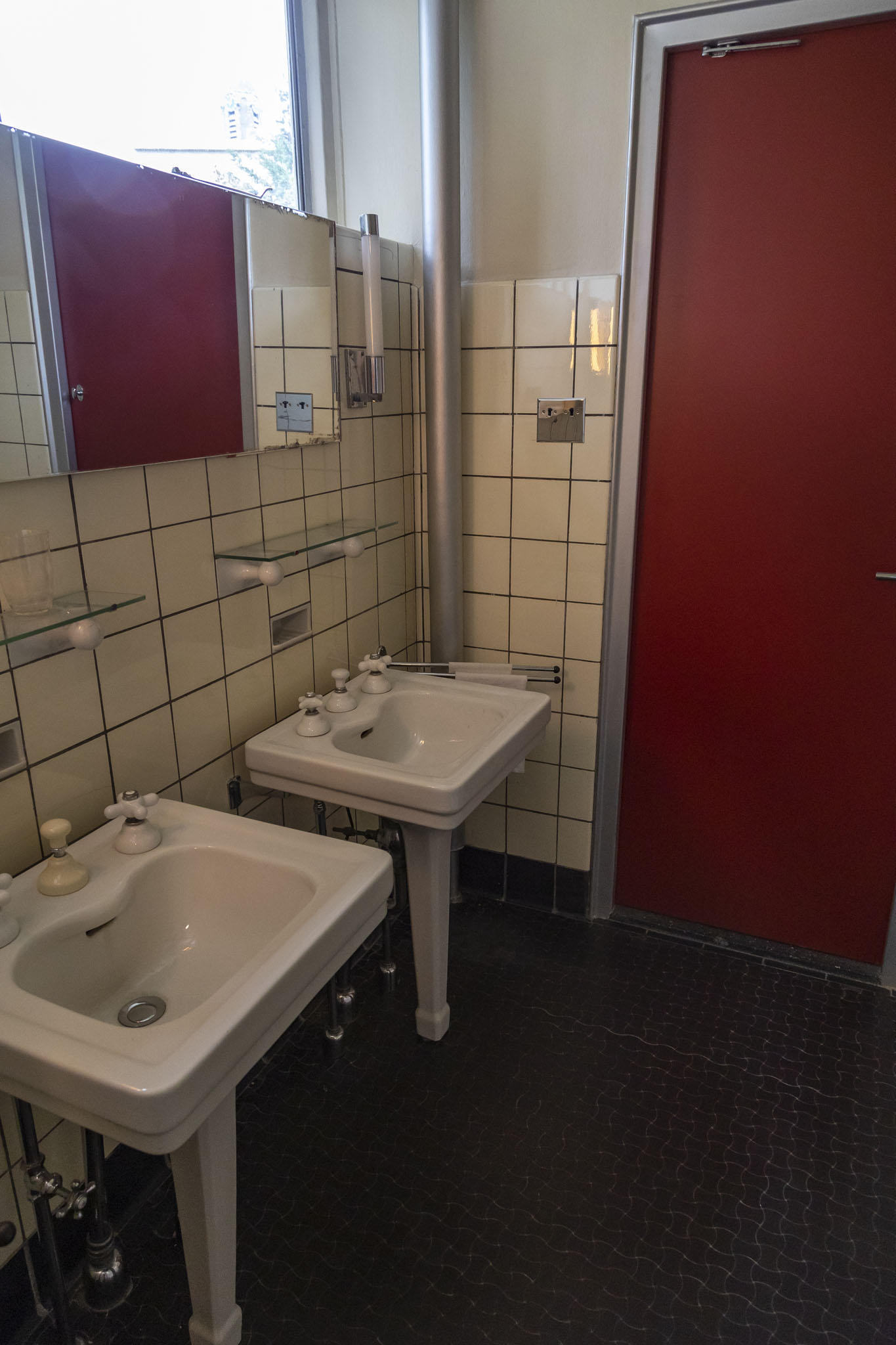There was just one place that I really wanted to see when we visited Rotterdam on our 2022 Island Princess European cruise because I’ve got a keen interest in architecture and design, and that was Huis Sonneveld, so after our pleasant walk through Het Park that was where we headed next.
Now, my wife definitely humoured me on this decision, but to be fair it had been her who’d wanted to see the glass blowing when we’d been at our previous port stop in Norway so I was owed. “You want to see an historic house, but historic like the way Americans think things are historic, meaning our own house is older, right?”
We headed in a broadly northerly direction from Het Park which took us through another park called Museum Park. You will be unsurprised to hear, hopefully, that this was a park in an area with a few museums dotted around it, particularly some associated with modern art, and there were a few pieces of artwork visible. On another day we might have ventured into those museums – and, indeed, that had been part of the vague plan we’d had for our day visiting Rotterdam because we’ve got a fondness for modern art – but we’d done a fair bit of walking already on this cruise as a whole and even on this day in this Dutch city, and I was keenly aware that my wife’s ankle might not appreciate too much strain.
Museum Park is part of the Boijmans Van Beuningen museum complex. A granite monument at the southern end of a lake was dedicated to G.J. de Jongh, director of Municipal Works of Rotterdam between 1879 and 1910.
Two buildings facing one another across the park, both part of the Boijmans Van Beuningen museum, couldn’t have looked more different architecturally. Definitely somewhere we need to come back to Rotterdam and have a look at some day.
This brought us to Huis Sonneveld.
From the outside it was clear to see that Huis Sonneveld came from the same sort of period of design that gave rise to Art Deco, but this 1933 house actually belongs to a style of architecture known as Dutch Functionalism. Functionalism, as the name suggests, is based on the idea that design should be for the purpose. In this way the house can be seen to be bridging the gap between Art Deco and Modernism.
Some of the principles of the functionalist design ethos would be clear to see when we walked through the rooms inside Huis Sonneveld: very little ornamentation, matching furniture in different rooms, an emphasis on health and hygiene with large windows or access to the main hallway or exterior spaces from most rooms, an abundance of well-equipped bathrooms. Pillared, floating elevations and a flat roof space for external use along with free-flowing designs and non-load-bearing exterior walls derived from the architectural designs of Le Corbusier who would be instrumental in the later modernist and brutalist styles.
We entered Huis Sonneveld, paid our money, put on our protective slippers over our shoes, grabbed an audio guide, and started to explore the inside of the house. Some original pieces and many reproductions of how Huis Sonneveld would have looked greeted us in every room, and the audio guide was absolutely fantastic. If you’re visiting this historic building then you really should make the effort to listen to every bit of information on the guide. We weren’t the only people visiting the building and it was fascinating to see us all wander around, stand still, listen to our guides, take photos, then wander off, all in a respectful silence.
That free-flowing design of the house that was helped by the steel skeleton could be clearly seen in the living room and in the shape of the stairwell that connected all the floors.
One thing we noticed was that every bed in every bedroom had a built-in radio and intercom system. This was part of the influence from America that helped Sonneveld direct the architects. In a similar way the house had an elevator, dumb waiter system, all the latest modern equipment, and luxury features that he’d experienced when living in and travelling around the United States, and when sailing on ocean liners to and from there.
From the top of Huis Sonneveld we could see back the way we’d come to the tops of the museums around the park. This space on the roof had an adjustable wind shield to allow it to be used comfortably. Our audio guides explained that the building had been used to house refugees during World War II and that many used to like to come to the roof and enjoy the fresh air.
We headed into the lower parts of the house where there was a kitchen that was a later change to the original design, replacing an earlier layout with new modular equipment from the late 1930s. This was another area that implemented functionalist designs with an integrated ventilation system for health and comfort.
Every room had a definite function and a definite character. Perhaps there was something a little too sterile about some of it although that comes from the fact that Huis Sonneveld is a museum house, reflecting a snapshot of how the family might have had all the rooms set up based on knowledge of furniture purchased and accounts from members of the family in later decades. Clearly, there was no sense that anyone truly lived in it now, but that gave it a mesmerising feel all of its own. Again, the audio guides helped a lot, adding anecdotes from the family about life growing up in the house.
I mentioned that my wife had tolerated my desire to visit Huis Sonneveld as it wouldn’t have been something she’d have picked but as we stepped out she told me, without any prompting in case you were wondering, that it had been a fantastic experience and that she was so glad she’d seen it. It wasn’t anything that we’d heard or seen any other cruise bloggers visit, which always appeals to us anyway, and it might initially feel like it only looks interesting to those who like modern architecture and design so that could put some people off. It shouldn’t, though. Huis Sonneveld isn’t huge – even listening to the audio guides in every room it only took us about forty five minutes to complete our tour of the inside of the house – so there’s no reason not to look around if you just want to do something a little different when visiting Rotterdam.
In the next post in this cruise travelogue series we’ll do a little bit more gentle walking in Rotterdam on a different route back to Island Princess at the cruise port.























































